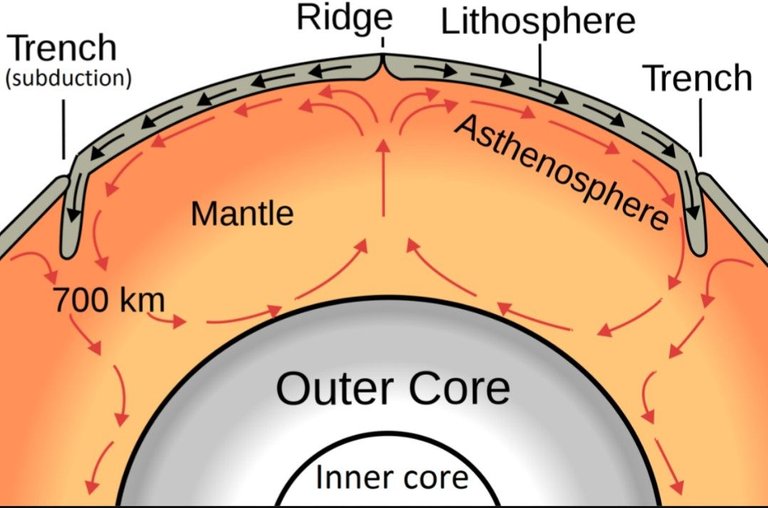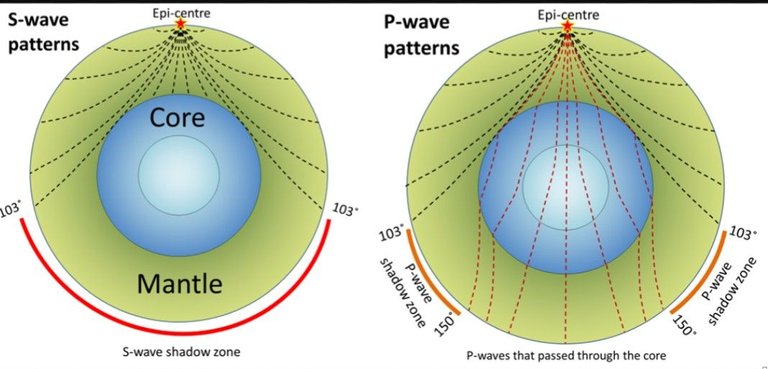The Earth's core is subjected to very high pressures and temperatures, strong enough to "mix" some chemical elements that are impossible to mix under surface conditions.
1 - Composition of different satellite photographs of the Earth. Credits: ESA
When we think of the core of the Earth and its composition, the first element that comes to mind is iron (Fe), and yes, the Earth's core is composed mostly of iron. But that would be the simple answer, the reality is that although we have been studying the Earth's core for many years with different techniques, there is still no consensus on its exact composition.
2 - Convection within Earth’s mantle. Credits: Physical Geology CC
The Earth's core is divided into two parts per state, the inner core would be in the solid state and the outer one in the liquid state. Both subjected to temperatures above 4000 ° C and at pressures of at least 300 GPa. This differentiation of state is very important to be able to study the nucleus, through the study of the behavior of seismic waves when crossing one or another region.
Thanks to the observation of seismic waves, since more than twenty years ago it’s known that the density of the Earth's core is 10% less dense than an alloy of iron and nickel. Then we expect to find lightweight elements that meet that density deficit.
3 - Patterns of seismic wave propagation through Earth’s mantle and core. Credits: Physical Geology CC
Taking into account the restrictions in terms of density and the speed of sound, a group of scientists has published a paper that estimates a higher proportion of magnesium in the Earth's core than previously thought.
”Any candidate light-element iron alloy must be able to match the inner-core and outer-core densities and sound velocities, consistent with equilibrium partitioning between (solid) inner and (liquid) outer core.”
Q1 - doi.org/10.1016/j.pepi.2017.12.003
Magnesium (Mg) isn’t usually considered one of those light candidates, because iron and magnesium don’t mix in conditions on the surface of the Earth.
”However, there is now evidence that shows that substantial amounts of Mg may be dissolved into Fe at high temperatures and high pressures; indeed, at high temperatures, the entropic effects become sufficiently large that the solubility of Mg in Fe increases almost exponentially with increasing temperature.”
Q2 - doi.org/10.1016/j.pepi.2017.12.003
According to this paper, the estimated magnesium concentrations can’t explain the density jumps between the inner core and the outer core by themselves. But it contributes by adding an element that was not previously considered.
Thus, as this paper acknowledges in its conclusions, we are still far from knowing the exact composition of the Earth core, so more direct and indirect study is required. But at least we now know that magnesium is present at a concentration of at least ~1.1% of the total weight of the core.
References
1 - ESA
http://open.esa.int/
Q1, Q2 - “Mg partitioning between solid and liquid iron under the Earth’s core conditions.” Yunguo Li et. al. - doi.org/10.1016/j.pepi.2017.12.003
https://www.sciencedirect.com/science/article/pii/S0031920117302868
2 - Physical Geology - Earth’s Layers: Crust, Mantle, and Core. CC
https://physicalgeology.pressbooks.com/chapter/3-1-earths-layers-crust-mantle-and-core/
3 - Physical Geology - Understanding Earth through Seismology. CC
https://opentextbc.ca/geology/chapter/9-1-understanding-earth-through-seismology/

Gift-thanks to @markperandin
Let's take care of the pale blue dot
Enjoy your day. Enjoy your life.

Gift-thanks to @stellabelle



@echowhale team swimming by with your upvote
You got a 30.61% upvote from @votebuster courtesy of @teks!
I think the extremely high temperature is the cost of the specific unknown elements in the crust
Both unknown and known elements are the culprits of the temperature. Their interactions cause the fusion of some elements. But there are more factors.